Contemporary artist James Tailor wants to intrigue the viewer through his assemblages.
Through impasto, draping, sculpting, casting and pleating, I work against the materials so as to convey a sense of uncertainty that avoids cognitive de-codification and looks for affective responses. From this point of view, my work doesn’t represent or allegorise anything but indicates those places where embodied experience and rationality fail to fit.
Featured image: Falling. Concrete, Car Grill and found objects. 104 x 62 x 75 cm. 2017.
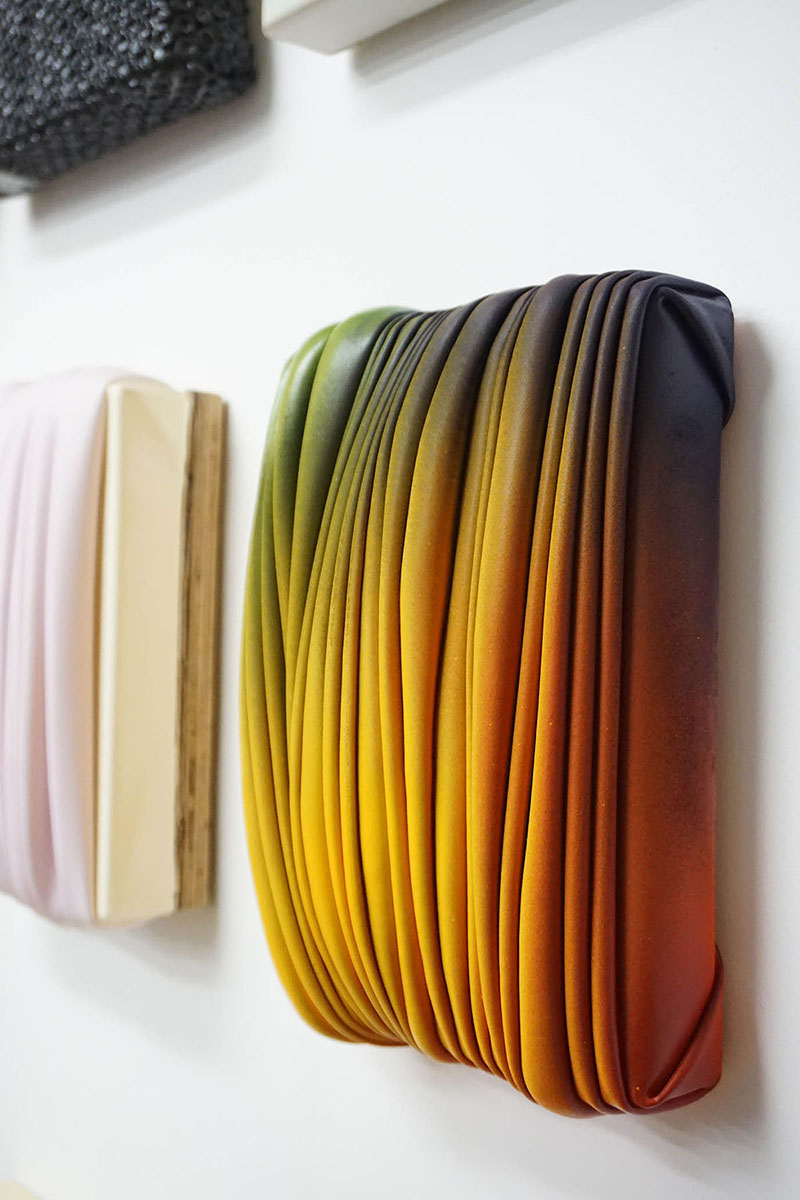
Multicoloured Composition 02. Contemporary artist James Tailor. Acrylic paint, skin and microfibre, on canvas and stretcher. 30 x 20.5 x 12 cm. 2019.
How do you describe yourself in the context of challenging people’s perspectives via your work and art?
I try to make my art as inclusive for as many people as possible. This means communicating my personal ideas or struggles in a fragmented way using objects or materials as my visual mode of communication. I believe you can say more using art, because people like to come to their own conclusions, which makes art the perfect dialogue to use.
How do you deal with the conceptual difficulty and uncertainty of creating new work?
I make works which vary. Mainly I use an assemblage approach so it is hard to know whether an idea would work without putting in the time. Assemblage by process is a series of eliminations that don’t necessarily work at the given moment. These trials are always helpful. Some of the most interesting work comes from something which is seemingly unsuccessful to begin with.
Tell us about the evolution of your practice. What would you call your style?
There used to be a point where I anchored myself to painting and, although there is still an undeniable link, my practice has come to include many other approaches towards production. Over time I found myself more drawn towards postmodern abstraction, colourfield and monochrome painting, matter-ism, materialism, surrealism and Dadaism which I enjoy exploring. However elements of Arte Povera and assemblage have been included, you could say organically. This results in a practice that is constantly changing, whose categorisation would only be constrictive.
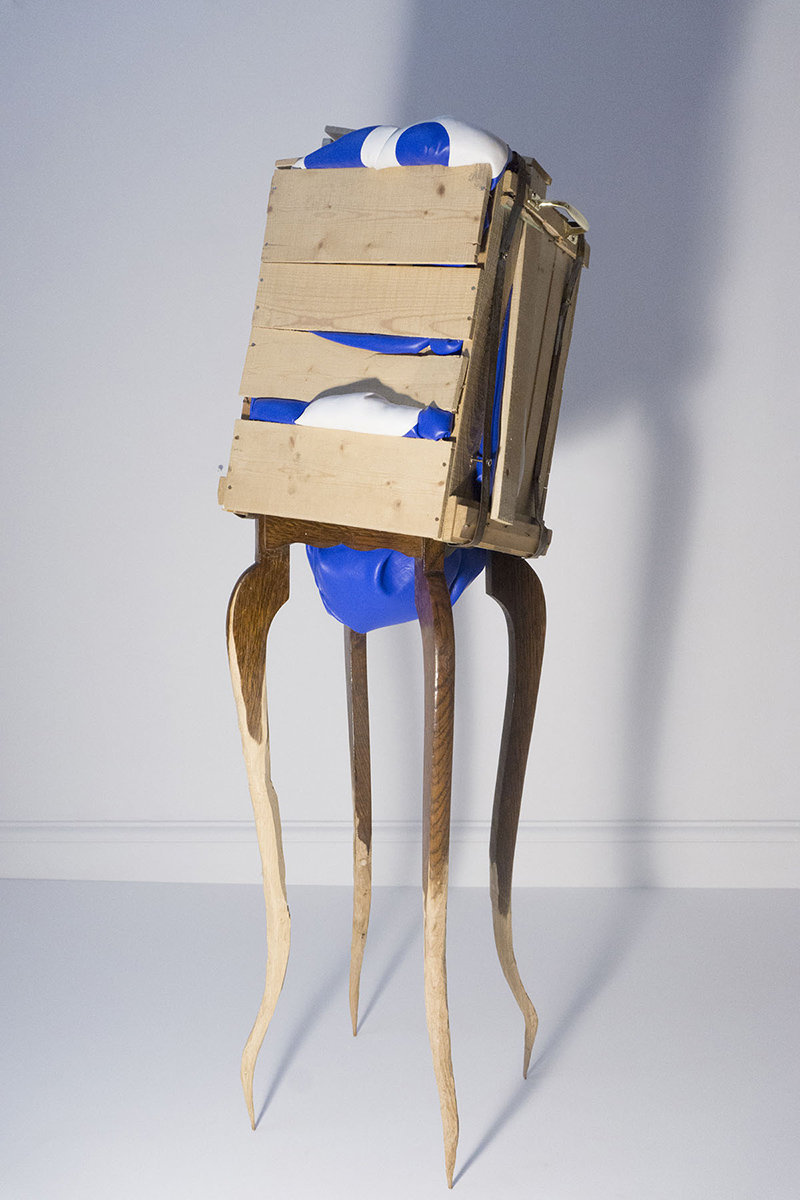
Synonymous. Contemporary artist James Tailor. Acrylic paint skin and found objects. 120 x 35 x 35 cm. 2020.
What inspires you? Let’s talk about your frameworks, references and process.
I normally start in one of two ways – by researching an area of interest, or the discovery of a rejected object that has potential to become something else. From one of the two I will then consider what I have around, grouping up possible paint skins or oddities I’ve collected over the years. Then, using an assemblage approach, I search for the most interesting combination or try to capture tension. Once I have the composition I will start constructing or fixing into place. Through impasto, draping, sculpting, casting and pleating, I work against the materials so as to convey a sense of uncertainty that avoids cognitive de-codification and looks for affective responses. From this point of view, my work doesn’t represent or allegorise anything but indicates those places where embodied experience and rationality fail to fit.
The melancholic severance inherent to the discarded objects I integrate into my assemblages is countered by the unifying quality of an obsessive reworking of those objects through acrylic paint. My obsessive application of acrylic paint comes from a desire to display an engagement in the kind of labour intensive work that, since conceptualism, the art world has seemed to be less passionate about. My fastidious, although sometimes fetishistic and even addictive process, suffuse my work with human presence and a sense of artisanal fulfilment that transforms melancholy into mourning.
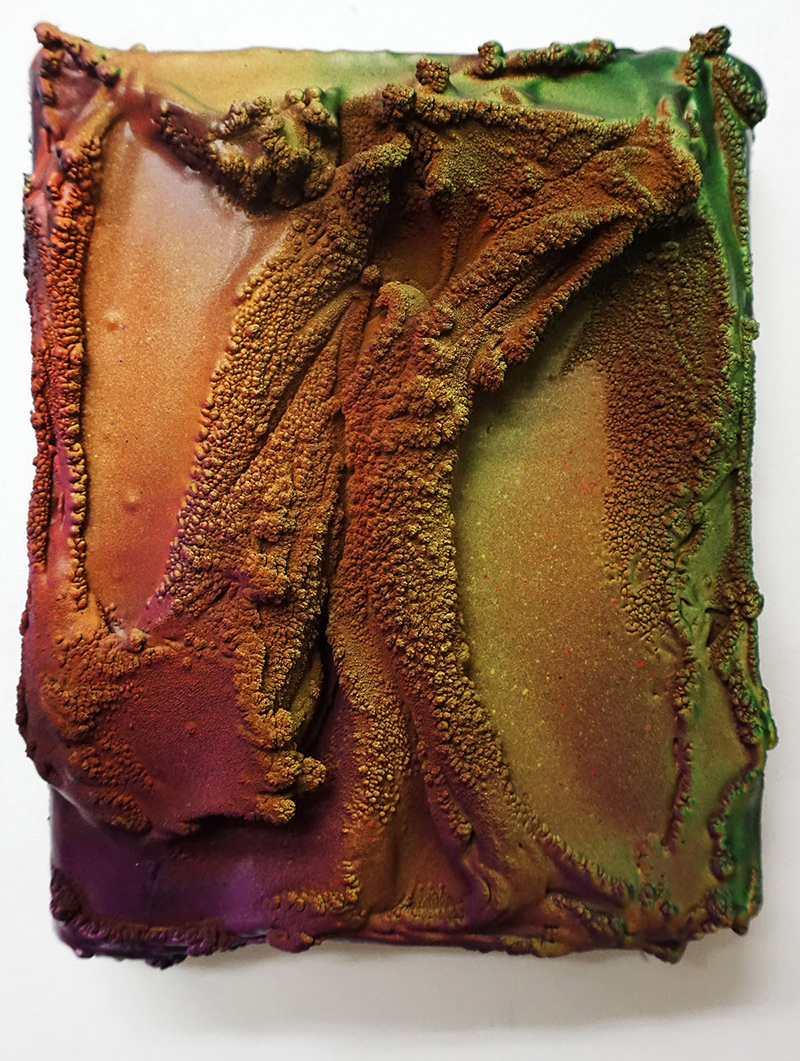
Chromophilla. Acrylic paint on canvas and stretcher. 22 x 27 x 7cm. 2020.
How does your audience interact and react to your work?
I believe my works can be understood on many different levels, ranging from the pure aesthetic values, emotions captured, the exploration of the material compounds or how these have been juxtaposed. It’s not a requirement that the viewer understands everything I have put into a piece. It’s about intriguing the viewer enough, so that they choose to increase their own engagement. This helps generate a more speculative conclusion by the visual interaction alone.
What were you working on when the lockdown was announced?
Before the lockdown I was working on some larger pieces for a solo show, which has understandably been put on hold. The majority of these works were sent to storage and for the foreseeable future and I’ll be working from my home studio on small and medium scale pieces for the solo show once the lockdown has been lifted.
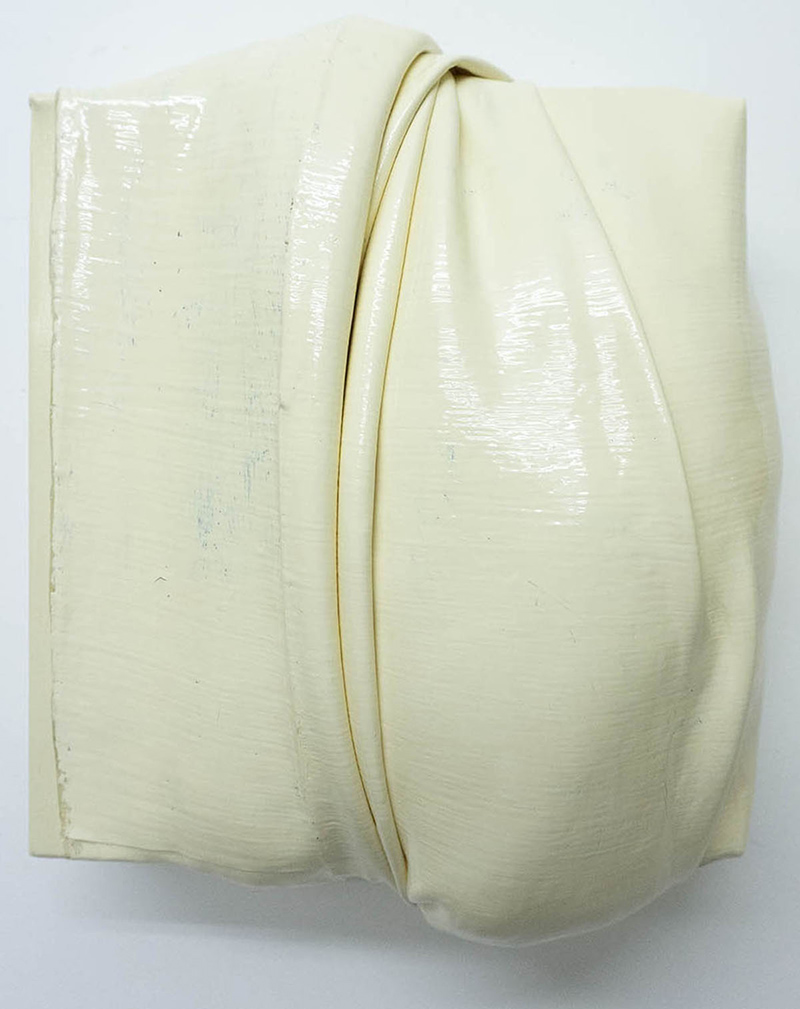
Creme 02. Contemporary artist James Tailor. Acrylic and gloss skin wrapped over canvas and stretcher with microfibre. 33 x 23 x 18cm. 2019.
How are you balancing life and work at home during this period? How has this affected your practice and plans?
I’m lucky enough to have a home studio so my work hasn’t been affected that much yet. Of course there has been a slowdown in sales and exhibition postponements, but this was anticipated. It’s important to stay as productive as possible, if only for your mental health. Difficult as this current climate is, it will generate new ideas or projects and more importantly an opportunity to re-evaluate how work is viewed and what is actually necessary in the future.
What do you look for while viewing art? Which shows, performances and experiences have shaped your own creative process? Who are your maestros? Whose journey would you want to read about?
When I am looking at art, I’m interested in how things are made, the ideas and innovation within a piece.
I get inspiration from historical, art and fashion documentaries, retrospectives, group shows, Instagram profiles, everyday life and random things I find in the streets. Artist I have found inspiring are Daniel Buren, Robert Rauschenberg, Joseph Beuys, Louise Bourgeois, Yves Klein, Marcel Duchamp, Sarah Lucas and Phyllida Barlow.
I have a large collection of art books. So I am well versed in the people I am interested in. In the future I would like to have my own practice documented. So, if I’m honest, I’d probably like to read and add my own journey to that library.
How do you reconcile the duality between the commercial and the creative? How does your interaction with a curator, gallery or client evolve?
I have a good balance in my practice, which caters to both. This balance is a necessity for me. While I enjoy creating I also appreciate when someone acquires my work.
I prefer to see communications with curators or gallerists as similar to a member of the public viewing my work. I’m quite happy to talk about my work with anyone who is interested. If someone wants to work with me and it makes sense I’m all for it.
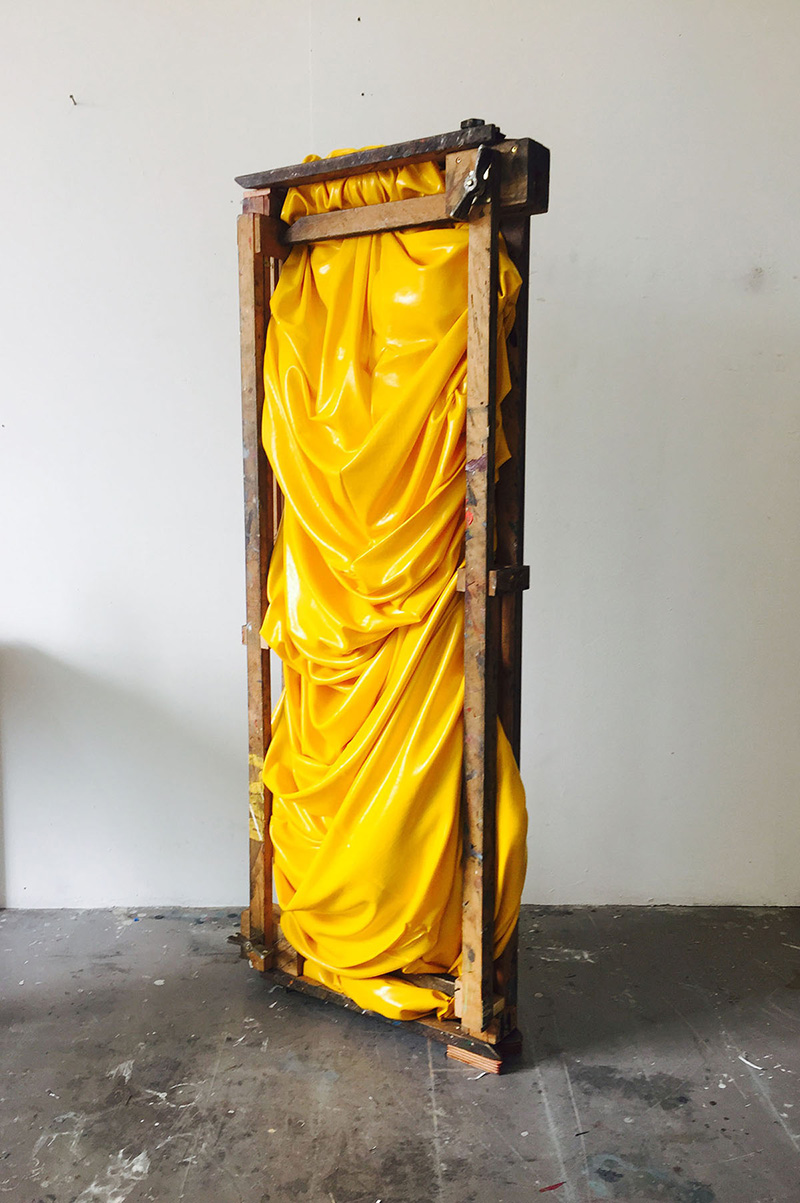
What was your first sale? Do you handle the commercials yourself or is it outsourced to a gallery or an agent?
The first work I sold was from my foundation show at City Lit in London. I have sold work in both ways in the past and both have their positives. I have always felt supported and people have acquired works from the beginning of my journey. What I have enjoyed about this first method is the direct access you have with your collectors and the possibility of building lasting relationships. Working with galleries has significant benefits, as it accelerates your movement to a wider global audience, art fairs and bringing new collectors to your practice. The majority of my larger pieces, which I may have struggled to find a place for sold via galleries and have found homes around the world.
Tell us about your studio. Could you describe your usual work-day in the studio?
Currently, I have a home studio due to Covid-19. Luckily I have enough space so I can dedicate a couple of rooms to production and my office. I also have a storage unit close to home where I store my works once finished.
A typical studio day is 9 am to 7 pm, but for the foreseeable future, while I have the studio at home, I can stretch my working day as much as I need.
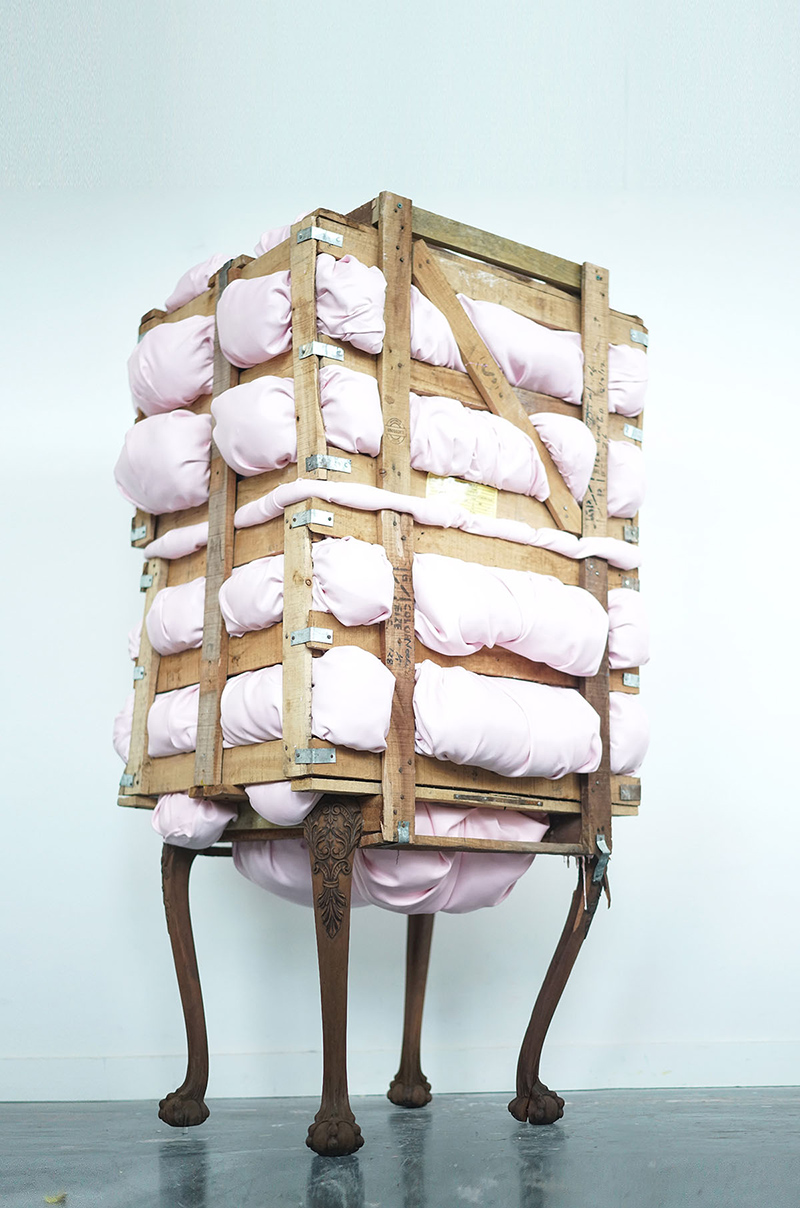
Holding On. Contemporary artist James Tailor. Acrylic paint skin, wood with found objects. 168 x 87 x 74 cm. 2018.
Are you more of a studio artist or naturally collaborative by nature? How do you feel about commissions?
I occasionally collaborate depending on the project. Nonetheless I would consider myself a studio artist but am open to future possibilities. Past collaborations have included Adidas, Kanye West and Nick Knight, besides other fine artists.
I welcome commissions as they can be a useful way of producing new works and also generating money. However, I generally wouldn’t accept a commission that verges too far away from my practice.
How many works do you make in a year? How many would you like to be making?
I have always been quite prolific. At the moment I’m producing 40 to 50 works a year. However, after a certain amount of time, my feelings may change towards a certain work and I may then decide to recycle elements into another piece. With the size of my studio and funds available, I’m happy with my production. However, if these were to change I could probably be producing more, varying in quantity and scale.

Falling. Contemporary artist James Tailor. Concrete, Car Grill and found objects. 104 x 62 x 75 cm. 2017.
Is there any topic you would like to be mentored on?
As an upcoming artist I would like to work with more galleries in the future, both commercial and non commercial, and do more residencies to allow time to develop ideas. I would also like advice on the business side of my practice.
Before you go – you might like to browse our Artist Interviews. Interviews of artists and outliers on how to be an artist. Contemporary artists on the source of their creative inspiration.











Add Comment